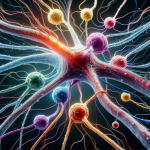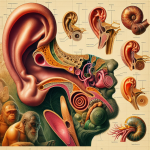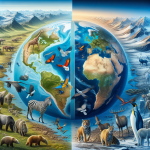
Boosting Selenoproteins to Slow Aging Process
Scientists Uncover Key Connections between Selenoproteins and Blood Stem Cells’ Youthful Functions
Scientists at Osaka University have uncovered critical connections between selenoproteins and the preservation of youthful functions in blood stem cells. Their work, recently featured in the prestigious Blood journal, delves into how these enzymes, which act as antioxidants, are vital in warding off oxidative harm—a common threat to healthy aging.
These proteins protect cells from the potentially detrimental reactive oxygen species (ROS) by neutralizing them. The team discovered that reduced production of selenoproteins could compromise the development of the immune system and accelerate age-related deterioration. Evidence from their research suggests that Vitamin E supplementation might counteract the negative effects associated with a shortfall in selenoprotein production.
Delving Deeper into the Role of Selenoproteins
Yumi Aoyama, a primary author of the study, explained, “We’ve seen that selenoprotein synthesis tends to decline in aged hematopoietic stem cells (HSCs), but the implications of this decline on cellular aging and its reversibility were not known.” The researchers employed a mouse model with specific gene alterations to evaluate the repercussions of disrupted selenoprotein production.
Hiromi Yamazaki, another key author, shared that the genetic alteration notably led to fewer B cells and a weakened capacity of HSCs for self-renewal. These effects imply possible connections to the typical signs of aging often linked with diseases. Subsequent research pointed to increased lipid peroxidation as the cause of these effects, with further tests revealing a shift in cell lineage preference from B progenitors to myeloid cells when selenoprotein creation was hindered.
Insights on the Impact of Dietary Interventions
Daichi Inoue, the senior researcher, commented on the data, revealing, “Our findings clearly show how vital selenoproteins are to curbing the accrual of lipid peroxides that advance with age.”
The investigation extended to how changes in diet could buffer the impacts of aging. Feeding knockout mice with Vitamin E, according to the study, might safeguard hematopoiesis and fix B cell differentiation issues.
These novel insights underscore the pivotal role of selenoproteins in maintaining HSC self-renewal and B cell-lineage immune cell maturation. The work of the Osaka University research group suggests dietary interventions as a new avenue to mitigate issues due to insufficient selenoprotein production, and in doing so, take on age-related diseases.
Backed by an array of scientific bodies from Japan and the United States, such as the Japan Society for the Promotion of Science and the American Society of Hematology, this study represents a collaborative triumph in promoting the well-being of the elderly.








